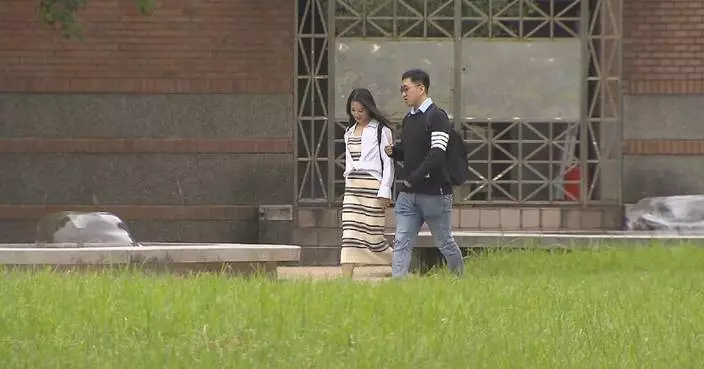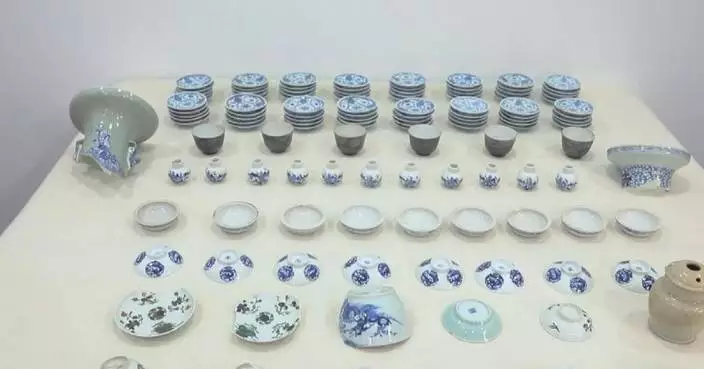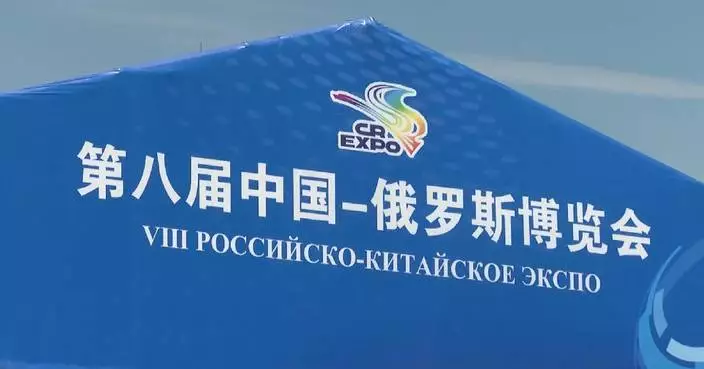Chinese President Xi Jinping arrived in Paris on Sunday for a state visit to France at the invitation of French President Emmanuel Macron.
French Prime Minister Gabriel Attal, along with other French high-ranking officials, warmly received Xi at the Paris Orly Airport.
Xi noted in a written speech upon arrival that it is a great pleasure to begin his third state visit to the French Republic and celebrate the 60th anniversary of China-France ties with French people.
Xi said as important representatives of Eastern and Western civilizations, China and France have a long history of mutual appreciation and admiration.
He also noted that 60 years ago, the two countries broke through Cold War blocs and established diplomatic relations at the ambassadorial level, and in the 60 years since, bilateral relations have always stayed abreast of China's relations with Western countries.
Xi pointed out that the development of China-France relations has not only brought benefits to the two peoples, but also injected stability and positive energy into the turbulent world.
The Chinese president said he will have in-depth exchange of views with his French counterpart on the development of China-France relations and China-EU relations under new circumstances, as well as current major international and regional issues.
Xi said he looks forward to consolidating the traditional friendship between the two countries, enhancing political mutual trust, building strategic consensus and deepening exchanges and cooperation in various fields with France. Xi's entourage includes his wife Peng Liyuan, Cai Qi, a member of the Standing Committee of the Political Bureau of the Communist Party of China (CPC) Central Committee and director of the General Office of the CPC Central Committee, and Wang Yi, a member of the Political Bureau of the CPC Central Committee and foreign minister.
Xi was also greeted by Chinese Ambassador to France Lu Shaye at the airport.
On its way to the hotel, Xi's motorcade received a warm welcome by the local Chinese community, with people waving Chinese and French flags and holding banners hailing China-France friendship.

Xi arrives in Paris for state visit to France
Chinese scientists have recently worked together and rebuilt the face of an ancient Chinese ethnic minority emperor via cutting-edge DNA technology.
Emperor Wu of the Xianbei-led Northern Zhou Dynasty (557-581), also known as Yuwen Yong, was an ambitious leader who died at 36. He belonged to the Xianbei nomadic group, which originated from the Mongolian Plateau.
The tomb of the emperor was discovered in 1993 in a village of the city of Xianyang in northwest China's Shaanxi Province. His skull and bones were discovered during an excavation held in 1994 and 1995 at the site of his tomb.
In late March this year, scientists led by the Shaanxi Provincial Institute of Archaeology and the Institute of Archaeological Science of Fudan University managed to decode key features of the emperor and speculate about his cause of death. The emperor might have died from chronic arsenic poisoning due to long-term use of a pellet, which was believed by ancient people to achieve eternal life.
"First, the skeleton can be used to determine age. Second, in terms of age and gender, some pathological research can also be done to see if he had any fractures or other (diseases)," said Zhang Jianlin, a researcher from the Shaanxi Provincial Institute of Archaeology.
Obtaining high-quality genomic data is crucial for restoring the face. Through DNA paleogenomics techniques and optimized DNA extraction, database building and capture methods, more history was revealed.
"First, we have done the shorter fragments enrichment method, which is a DNA extraction method. In addition, we have developed some more sensitive database building method suitable for ancient samples with short fragments. You can regard it as a method to amplify the genetic signal, the extracted DNA. The third is that we have developed a capture method that is more suitable for this kind of highly degraded ancient samples. So we have optimized and improved our approach from three aspects at the same time," said Wen Shaoqing, an associate professor of the Institute of Archaeological Science of Fudan University.
The reconstructed face showed that Yuwen Yong had black hair, yellow skin and brown eyes, while his appearance was typical for people from East or Northeast Asia.
Wen said that with the help of the DNA technology, the accuracy of facial restoration can reach 90 percent.
"As for the accuracy of (facial restoration), the current situation is that if there is a skull as a basis, its accuracy will be relatively high," said Wen.

Scientists rebuild face of ancient emperor using advanced DNA technology










